Click here to learn more about the How to Identify article series.
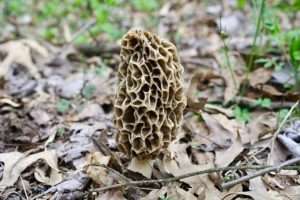
Name: True morels (Morchella spp.)
Range and typical habitat(s): Widespread throughout temperate North America, Europe, New Zealand and Australia; less commonly reported in South America, Asia, and coastal Africa. Morels are commonly found in wooded areas, and many species grow primarily on soil; these may have symbiotic (though not necessarily mycorrhizal) relationships with trees and other plants. Other morels, such as M. importuna, are saprotrophs that happily colonize dead wood, to include mulch used in landscaping. At least one, the white morel M. rufobrunnea, may be capable of both lifestyles. Morels are exceptionally difficult to cultivate, and no large-scale cultivation method has been developed as of this writing.

Both deciduous and conifer forests may be homes to morels; yellow morels tend toward deciduous, while conifer forests are more likely to feature black morels. A wide variety of tree genera may be associated with morels include but are not limited to Pseudotsuga, Pinus, Abies, Quercus, Fraxinus, Alnus, and Castanea.
Distinguishing physical characteristics (size, colors, overall shapes, detail shapes): Morels generally have cone-shaped caps whose edge is attached to the stipe (stem) all the way around.
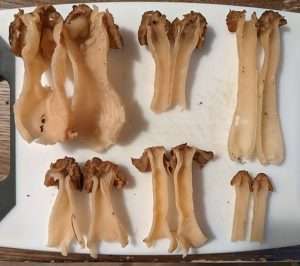
However, the half-free morels–M. punctipes (seen right), M. populiphila, and M. semilibera–may have a small space between the bottom edge of the cap and the stipe. The cap has a honeycombed appearance, with surfaces deeply pockmarked with cavities surrounded by brittle ridges that crumble into fragments when crushed. Colors vary, and morel species are often grouped together by cap color; black morels have a dark brown to black cap, while yellow and white morels are more tan to cream.
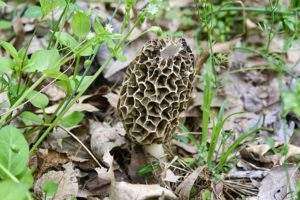
The stipe may be lightly textured, and is usually lighter in color than the cap, often white, cream, or pale yellow depending on species. Cutting a morel’s stipe open reveals that it is entirely hollow inside. A mature morel is generally around three to six inches high, though larger specimens have been found.

Morels primarily fruit in spring, though M. galilaea and M. rufobrunnea fruit in fall. Some morel species, such as M. tomentosa, M. exuberans, and M. eximia, are adapted to produce large flushes the spring after a forest fire burns the land.
Other organisms it could be confused with and how to tell the difference: There are multiple groups of mushrooms that look similar enough to morels to cause confusion; given morels are a popular edible mushroom, consumption of some of these lookalikes has caused serious illness on numerous occasions.
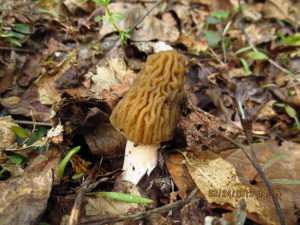 V. bohemica
V. bohemica
-
- ; note that the bottom edge of the cap is not attached to the stipe, and that it has more of a wrinkled appearance than honeycombed. By NeoSporen,
- .
Members of the genus Verpa look similar to half-free morels in that the bottom edge of the cap is not attached to the stipe. However, when cut in half the half-free morels have more of the upper portion of the cap attached to
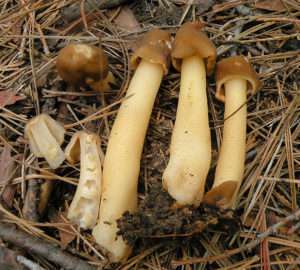
the stipe; Verpas only have the very tip attached. Outwardly they do look quite similar to morels overall, often having a conical cap with a honeycombed texture; some may have less distinct cavities and a more “lumpy” appearance rather than honeycombed. The cap of the Verpa is generally smaller in proportion to the stipe than on mature morels. The stipes of young Verpas are full of soft, fluffy hyphae, but they become hollow like morels as they mature.
Like morels, they are considered by some to be edible when thoroughly cooked. However, one study purports that V. bohemica is also toxic, having the same sort of toxins as the false morels I’ll discuss below. Some field guides recommend avoiding the other Verpa species as well due to potential inedibility. Both Verpas and morels fruit in spring, and may sometimes be found in the same area. As someone who would like to become an old, rather than bold, mushroom hunter, I recommend skipping the Verpas and sticking to the true morels, just in case.
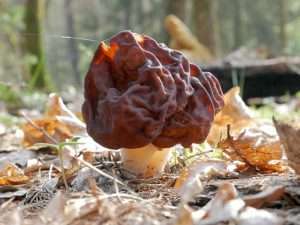
False morels, in the genus Gyromitra, are a more notorious morel lookalike. Several species contain significant levels of gyromitrin, a compound that when boiled or consumed hydrolizes into monomethylhydrazine, a chemical used in making rocket fuel. Consumption may cause gastrointestinal distress, neurological symptoms, kidney and liver failure, coma, and failure of the respiratory and circulatory systems. The most severe cases result in death within a week after consuming false morels. Some species have more gyromitrin than others, and it’s likely that the compound can build up over time in people who eat false morels on a regular basis. While there are purported methods used to reduce or remove gyromitrin from false morels, as a foraging instructor I do not recommend consuming any Gyromitra false morels due to the risk of severe illness.
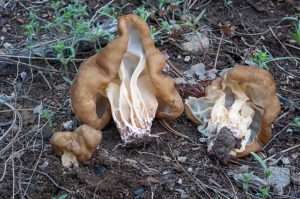
So how do you tell the difference? Where true morels look like honeycombed cones, false morels look like brains, oversized raisins, or piles of worms. If you cut a true morel open the stipe will be completely hollow, but the interior of a false morel may have multiple smaller chambers or be completely solid. It is exceptionally important to make sure you get a sure identification on whatever species you are picking, as true and false morels fruit in spring, and sometimes in the same areas.
Anything else worth mentioning? Morels are definitely one of those mushrooms you want to cook thoroughly before eating, as raw or undercooked morels can cause gastrointestinal distress. Also, if you hang around mushroom foragers long enough, you’ll hear all sorts of advice–some of it conflicting–about when and where to find morels. It’s true that they fruit in spring, starting in lower elevations where it warms up sooner, and then higher elevations as spring temperatures continue to rise. South-facing slopes that warm up faster with sunlight may also see earlier fruiting. And, of course, places that burned or were logged in the last year or two may see a bumper crop of morels the following spring. Many patches of morel mycelium only last a few years, so the place you found morels one year may not fruit the next.
Beyond that, it’s best to study up on the species of morel that grow in your area. Find out what sorts of habitats they like, if they’re associated with any particular trees, whether they are responsive to burns and other disturbances, and whether there are any toxic look-alikes that grow nearby.
Further reading:
Mushroom Expert: Morchellaceae
Mushroom Appreciation: Morel Mushroom
Did you enjoy this post? Consider taking one of my online foraging and natural history classes or hiring me for a guided nature tour, checking out my other articles, or picking up a paperback or ebook I’ve written! You can even buy me a coffee here!
